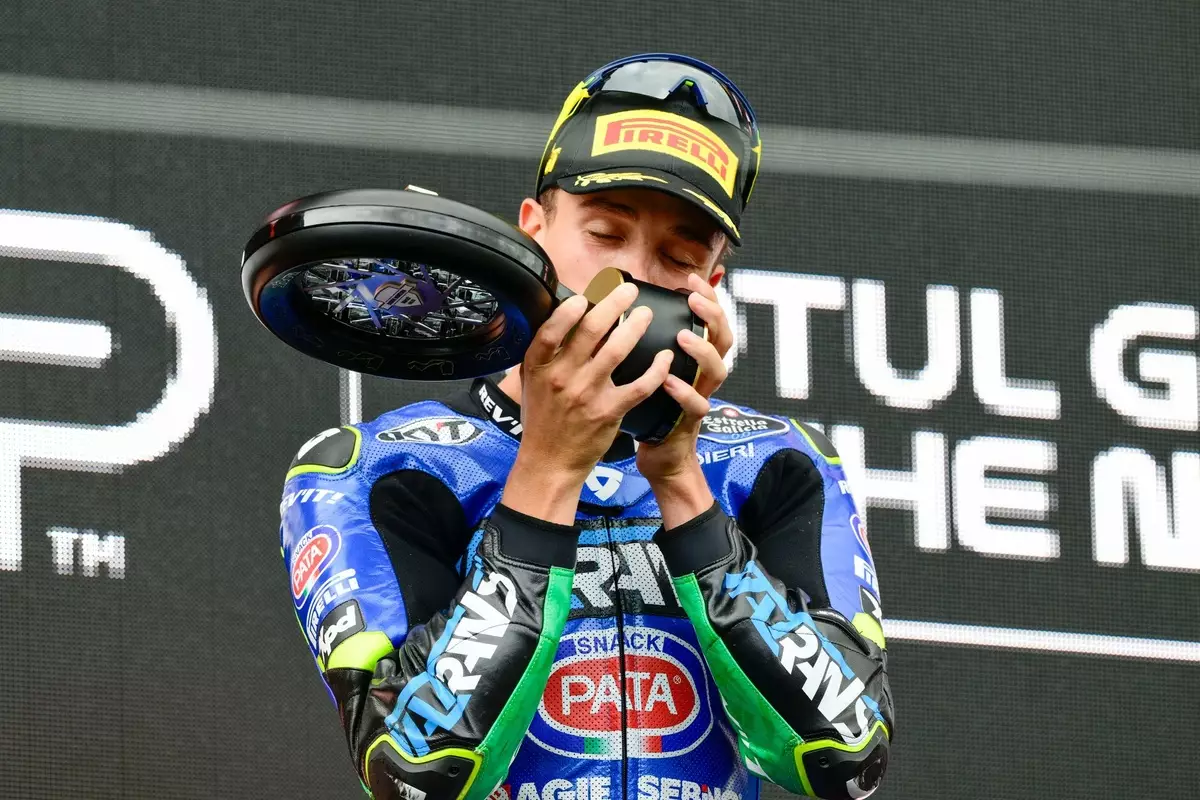In an era where MotoGP is increasingly competitive and talent-scouting is more intense than ever, Diogo Moreira’s recent victory at Assen marks more than just a personal milestone; it signals a potential seismic shift in the sport’s future landscape. Achieving his first Moto2 triumph from pole position, Moreira not only demonstrated his racing prowess but also etched his name in history as Brazil’s first Moto2 winner. This achievement, within the broader context of rising global talent, may serve as a catalyst for more diverse representation at the highest levels of motorcycle racing. His rapid ascension, marked by consistency and resilience after a hesitant start, underscores the importance of patience and strategic development in grooming future stars.
Strategic Positioning in a Competitive Arena
Moreira is currently navigating a complex web of negotiations and strategic moves that could propel him into MotoGP as soon as next year. While on the surface, these considerations seem purely contractual or logistical, they reveal a deeper narrative about talent recognition and market dynamics. The speculation about his joining Pramac Yamaha alongside Toprak Razgatlioglu indicates Yamaha’s strategic intent to deepen its involvement in South America, tapping into Moreira’s promising potential. This move would also effectively shake up the current rider arrangements, displacing seasoned riders like Miguel Oliveira and Jack Miller, and reshaping team compositions.
The fact that Moreira’s management team is cautious about rushing into MotoGP, favoring a potential final year in Moto2 with Pramac’s own team, shows a mature understanding of rider development. It acknowledges that stepping into the premier class requires more than skill; it demands readiness, maturity, and an environment that fosters sustainable growth. His preference to remain in Moto2 if necessary, with the comfort he’s established within his current team, signals a wisdom that often gets overlooked in the high-stakes world of motorsport. This calculated patience could ultimately be the hallmarks of his long-term success.
Market Dynamics and the Broader Implications
The evolving negotiations around Moreira’s possible moves reveal the intricate dance between manufacturers, teams, and sponsors, all of whom are vying to shape the next generation of champions. Yamaha’s recent partnership with Brazil appears strategic, aimed at expanding its footprint and tapping into emerging markets. Moreira’s association with Yamaha, including a recent test at Balaton, underscores this concerted effort. The move not only enhances his visibility but also aligns with Yamaha’s vision of cultivating young talents for future competitions.
Conversely, other premier manufacturers like Aprilia and Honda are observing these developments with keen interest, waiting for the optimal moment to secure promising riders like Moreira. Aprilia’s interest in placing him with Trackhouse hints at a broader strategy to develop a pipeline of young talent, potentially creating a new benchmark for rider development programs. Honda’s own intricate poker game, tangled in the Martin–Aprilía situation, further emphasizes how tight and strategic these negotiations are becoming.
What this suggests is that Moreira’s potential ascension is more than a personal breakthrough; it’s a strategic move that could influence manufacturer alliances, team structures, and the inclusion of emerging markets within MotoGP’s global framework. His rise embodies a shift towards recognizing diverse talent and underscores the sport’s evolving identity—more inclusive, dynamic, and internationally-minded.
The Broader Impact on Motorcycle Racing’s Future
Moreira’s story exemplifies the changing face of motorcycle racing. It shifts the narrative from a predominantly European-centric sport to a more globalized, inclusive arena where talent from regions like South America can truly shine. His victory and subsequent negotiations illuminate the importance of strategic development pathways and the vital role of manufacturer support in nurturing promising riders.
Furthermore, his potential move underscores a broader shift in how team management and sponsor relationships are shaping career trajectories. The sport’s future depends on these strategic alliances, and Moreira is positioned at the crux of this transformation. His journey highlights that success in MotoGP isn’t solely about speed but about timing, environment, and the art of strategic positioning—lessons that will resonate with aspiring riders and teams alike for years to come.
The question remains whether Moreira’s talent will be enough to reshape the competitive landscape of MotoGP or if systemic changes in how young riders are nurtured and promoted will follow suit. One thing is clear: his upcoming moves will be watched closely, not just by fans, but by the industry’s decision-makers eager to spot the next big star capable of elevating the sport’s global appeal.


Leave a Reply